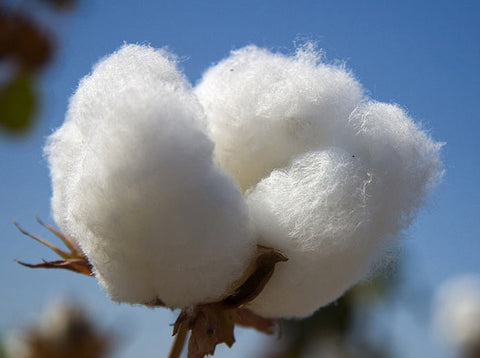The Difference Between Linen & Cotton
Posted on 24 May 2016
‘Linen’ can loosely refer to the many bedding items around the house such as sheets, quilt covers and pillowcases, however not many people know that linen is also a stand alone textile, completely unique and different from cotton material. Both possess a multitude of amazing properties, but let's get to the root of how these two super-fabrics differ...
100% PURE LINEN: The lowdown
Linen or pure linen, (referred to throughout this article) is a textile made from the stalk of the flax plant and is laborious to manufacture. Flax plants must be pulled rather than cut from the ground to protect the full length of the fibre. Microbes then decompose the woody sections allowing easy separation of the fibre, which is then rolled and stored for 3 months for softening. Combing separates the impurities and shorter fibers from the long fibers which are processed and spun into smooth, soft yarn. The longer more refined fibers of the flax plant are used for bed linen whilst the short fibers form a heavier yarn and are used for sturdier applications such as upholstery and heavy apparel items.
100% COTTON: The lowdown
Cotton is a soft, fluffy staple fiber that grows in a boll, or protective case, around the seeds of cotton plant. Cotton is harvested mechanically, by a cotton picker machine that removes the cotton from the boll without damaging the cotton plant. Cotton fibre surrounds the seeds of the cotton plant. Cotton in its raw state is not naturally strong. To turn it into a strong yarn, it needs to be twisted or spun. It can then be woven into cotton cloth.


Uncut stems of the flax plant and bolls of the cotton plant ready for harvest.
So what is the difference between cotton and pure linen you may ask …?
1. STRENGTH AND LONGEVITY
Both produce robust fabrics, however pure linen is known to be the world’s strongest natural fibre and is 2-3 times stronger than cotton. Correctly cared for cotton sheets should last for 4-5 years, whereas pure linen sheets only begin to hit their stride after this time.
2. THREAD COUNT
Thread count refers to the number of horizontal and vertical threads per square inch. Pure linen thread is naturally thicker than cotton so by comparison has a lower thread count. Average pure linen fabric will have a thread count of between 80-180. Because cotton yarn is finer, cotton fabric only starts at about 200. Pure linen is not categorized by thread count whereas nearly all cotton sheeting is. The Thread Count Fallacy is a great misconception that a high thread count equates to a superior quality sheet but this is not always the case and most bedsheets companies in Europe have removed thread count from their packaging.
3. ABSORPTION
Pure linen absorbs water a lot faster than cotton. Water will penetrate to both sides of pure linen in a very short time whereas cotton will take a longer time for water to penetrate through the fabric. This is why cotton sheets can feel rather damp for an extended time when you begin to sweat. The moisture takes longer to evaporate from the fabric. Pure linen can gain up to 20% of its dry weight in moisture before it begins to feel damp. This property allows pure linen to still feel comfortable and relatively dry, by its ability to remove perspiration from the skin.
4. HEAT CONDUCTIVITY
The rate a fabric transfers heat is referred to as its heat conductivity. Heat conductivity and air permeability combine to make a fabric feel fresh and cool. Pure linen’s long fibers have the highest heat conductivity of any fabric and has the ability to lower skin temperature. Pure linen will keep the body cool in summer and warm in winter. Cotton also transfers heat away from the body but not as efficiently as pure linen and is best used in average temperatures.
5. TEXTURE
Pure linen is cool to touch and is thicker than cotton. It’s a weighty fabric without being stuffy or stifling like some heavy thread count cotton sheets. Pure linen fibers contain a natural resin called lignin which at first can make the fibers stiff, and appear somewhat rough, however through normal use and wash pure linen will soften, becoming smooth and lustrous. Cotton is comfortable on the skin, light and soft to touch and is quite soft straight from packaging.
6. PRICE
Pure linen is costly to due to the timely and laborious process to harvest and manufacture it. Premium linen is cultivated in France and Belgium, both having optimal climates and conditions for growing the flax plant. The cotton plant is versatile and resilient and can be grown all over the world. Production is mainstream as well as easier and faster than pure linen, reflecting in a less expensive purchase price.
So there you have it - head to head, pure linen and cotton are superb natural textile heavyweights each with a long list of advantages. Both are soft, durable fabrics and deciding which to purchase comes down to budget, purpose, aesthetics and of course personal taste.

